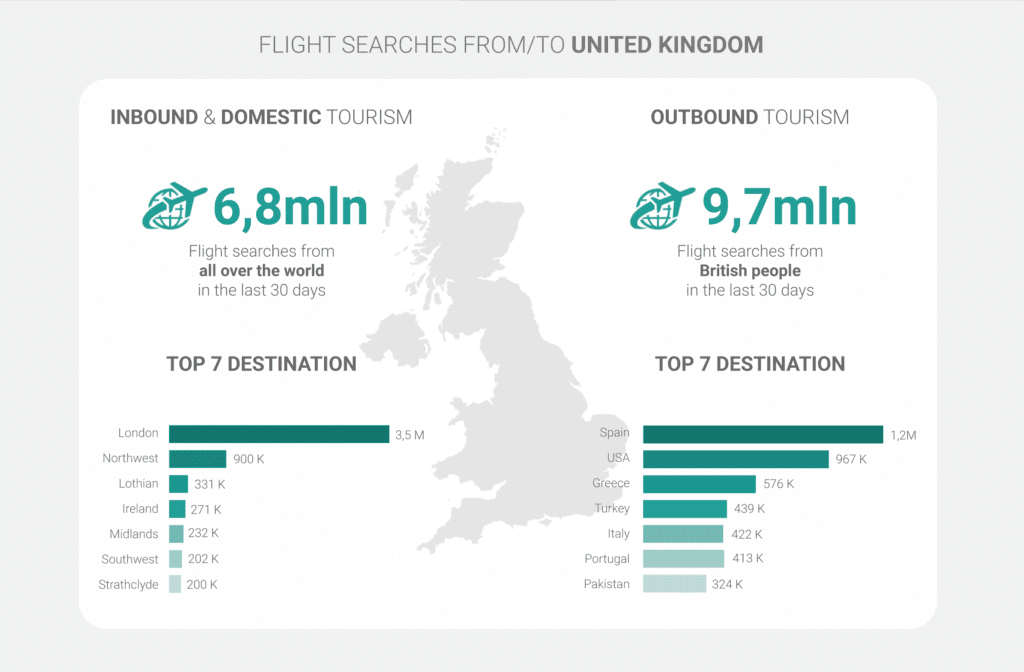In recent years, the tourism industry has been disrupted by a strong push for innovation, thanks to the introduction of new technologies and greater managerial awareness of their necessities.
NB: This is an article from Lybra, one of our Expert Partners
As is often the case, new technology evolves very quickly in times of lack to solve/address the issues that the industry is facing at the time, so it’s important for us to recap some of the most important developments, to better understand the parts of technology that are necessary for hoteliers and which ones can be put aside for another day.
Subscribe to our weekly newsletter and stay up to date
I’ll explain why and how but, first, let’s start at the beginning.
A Brief History
Big Data is a relatively new concept in the tourism industry and, as such, there is still a great deal of confusion as to what Big Data is and how it helps hoteliers get more bookings and revenue; to make it easy, I’ll give you a simpler definition and explain why it’s key for the future success of revenue management.
Big Data is, quite simply, a huge amount of data – including email data, data from images, text, search data, etc. – that can be either structured (i.e., presented using tools like Excel) or unstructured.
The vast use of cloud services combined with the volume of data has resulted in the term Big Data – simply because the scope and complexity of the data available are beyond the human mind to compute in a time-effective manner. The interconnection of systems, combined with the infinite capacity to store data at low prices, has opened the door to the democratisation of Big Data, which was previously the exclusive domain of only a few.
Until recently, Big Data was the key element missing, but highly necessary, to complete and perfect the modern revenue management processes, revenue management systems and strategies – but thankfully, today, we have the technology to support revenue management completely.

What Exactly is Big Data in Revenue Management?
The application of Big Data in the travel industry can be very extensive and varied, so let’s focus on its impact on the field of revenue management, where it is ideal for the analysis of demand, as a basis for pricing decisions.
Here’s why…
The classic elements and key actions involved with effective revenue management are:
- Selling your room at the right price…
- Selling your room at the right time…
- Selling your room to the right customer.
The evolution of revenue management analysis techniques has always revolved around these concepts.
We often hear about the importance of elasticity of demand, to understand how much a customer is willing to pay for a hotel room, but this data has always been difficult to obtain. The simplest attempt has been to analyse the hotel’s history (via PMS data) to study the purchasing patterns of customers in the past, and assuming they will remain consistent, using them to make future decisions. In the past, that might have provided successful at times, but there are many case studies based on this model of analysis, which have glaring weaknesses that we can explore simply by re-evaluating the strategy, based on our earlier definition of revenue management:
1. Selling at the right time
Q: When is the right time to raise or lower a room rate?
A: Without Big Data, the answer is that we don’t know for sure.
According to the traditional approach, we analyse the history, define a starting rate, and based on the past year, we adjust prices by taking into account the evolution of occupancy, along with other more or less important variables (which also change according to how the revenue manager applies his/her decisions). This method of analysis is correct but not very precise.
Without real-time demand data, we don’t know any precise data about potential guests’ interest in traveling to your country, destination and/or property – or how many people will be coming to the destination in the coming days/weeks/months/year – because we only have a projection from the past.
We don’t know when to raise the price, or whether to wait, because we don’t have any idea of what the future will bring, in terms of demand.
As such, many revenue managers would choose to raise their room rates at the wrong time or choose to not raise them when there are customers who are willing to buy at higher prices. Alternatively, other revenue managers blindly try to match or beat competitors’ prices, a practice that often leads to a downward spiral, depressing the entire market.
2. Selling at the right price
Q: What is the right price for guests to want to book a room at your property, instead of the competition?
A: Without demand data, it is very difficult – if not, impossible – to answer that question.
One method is to, again, analyse price patterns over history but here’s an important flaw in that strategy: can we ever be completely sure that the correct price was applied in the past?
Unfortunately, we can’t. Like in the previous example, this method makes it very likely that you will inherit some errors in the present, due to past pricing errors.
This strategy isn’t just a problem for revenue managers; it also provides highly inefficient when using technology that uses this type of algorithm to calculate room rates.
Let’s look at an example: in machine learning, models of classification, such as automatic image recognition, the algorithm is ‘trained’ to recognise an image because it is given the correct image beforehand; as such, it can identify an apple, as an apple, when it sees one later, because it was initially shown an optimal image of an apple (as a basis for comparison).
In the case of hotels, revenue management algorithms that base their pricing on this strategy, will encounter the same problem; by using potentially flawed (or less than optimal) historical data to predict the future, you might get suboptimal pricing suggestions, which don’t factor in current market conditions.
To conclude:
There is no dichotomy between Small Data (PMS data) and Big Data (demand data) because, the two combined, provide the complete picture that is needed to develop data-based revenue management strategies and establish accurate rates, in real-time:
- In revenue management, Big Data offers the opportunity to analyse, in real-time, how many customers are searching for your destination, from which country of origin and with what spending power. This is crucial information to know to set the right price, to attract the right customer; however, without an RMS with large infrastructure and advanced analysis models to accurately process the data, it’s impossible to capture and analyse this data manually.
- Small Data makes it possible to observe, in detail, the main data elements of the hotel, including the evolution of key metrics, which are essential for defining sales strategies – of course, that is assuming that the data that is being analysed was entered correctly into the PMS.
The Demand Data Hub: An Innovative Project to Democratise Big Data for the Benefit of Hotels
Lybra and Zucchetti Group have developed the first large-scale Big Data project, Lybra EYE – a module within Lybra’s Assistant RMS – designed to analyse demand, using PMS data from 15,000 hotels in Italy, combined with sales price mapping and event analysis.
This project was created to add an important missing piece to revenue management performance, allowing us to answer the questions hoteliers ask themselves daily: how many tourists are there who would book my hotel rooms? How much are they willing to spend?
When combined and well-assembled – as in Lybra EYE – Small Data and Big Data can offer important demand analysis to help support hotels’ profitability, now and post-COVID.
Lybra Assistant, with the addition of the Lybra EYE module, is the first RMS to combine the benefits of Small Data and Big Data in one system, offering a unique experience for the revenue manager, who is now able to monitor market data and demand pressure in REAL-TIME. The Lybra EYE module, which has put Big Data within the reach of all Italian hotels, exponentially increases the accuracy of analysis, compared to traditional methods.
For now, the Lybra EYE module is only available in Italy, but it will be available to hotels in other countries over the coming months. Contact us at erik.munoz@lybra.tech to find out when the Lybra EYE module will be available in your country or to learn how the Assistant RMS can help your property embrace future demand data – including flight searches – to set the most accurate, real-time room rates, and capture the demand already coming to your destination.
About Lybra (Formerly Lybra.Tech)
Lybra is an Italian SaaS company, offering an innovative, machine learning revenue management system (RMS) for the global hospitality industry. Lybra’s Assistant RMS was designed to improve the quality of hoteliers’ lives, by simplifying and automating daily revenue management operations to capture more of the demand coming to their destination, boosting their property’s bookings and revenue – even in times of decreased demand, like the ongoing COVID-19 pandemic.
In May 2020, Lybra was acquired by the Zucchetti Group, a leading international technology company offering software, hardware and ITC services to many global sectors, including hospitality. Due to the partnership with the Zucchetti Group, the Assistant RMS has set the worldwide standard of excellence for the quality and breadth of hotel demand data integrated into the algorithm – compiled by the global hospitality technology companies that are owned by the Zucchetti Group – ensuring the most accurate room rate suggestions, in real-time, as the market demand changes. To learn more about Lybra, visit lybra.tech.







